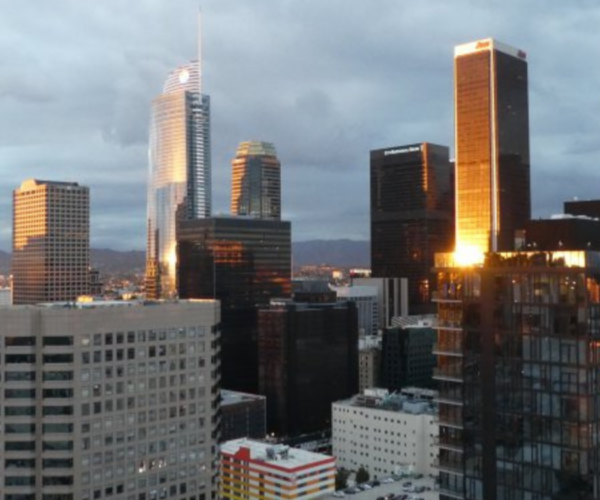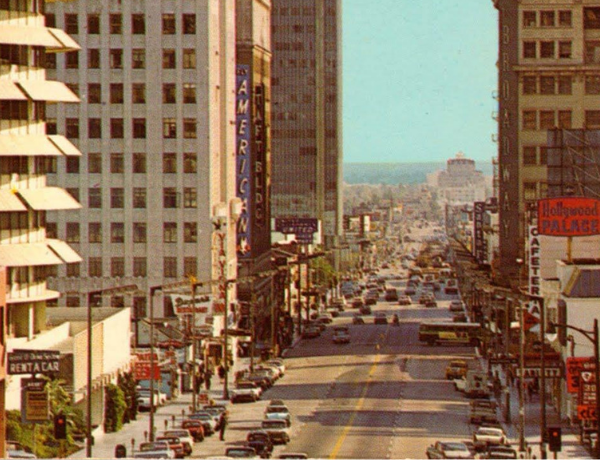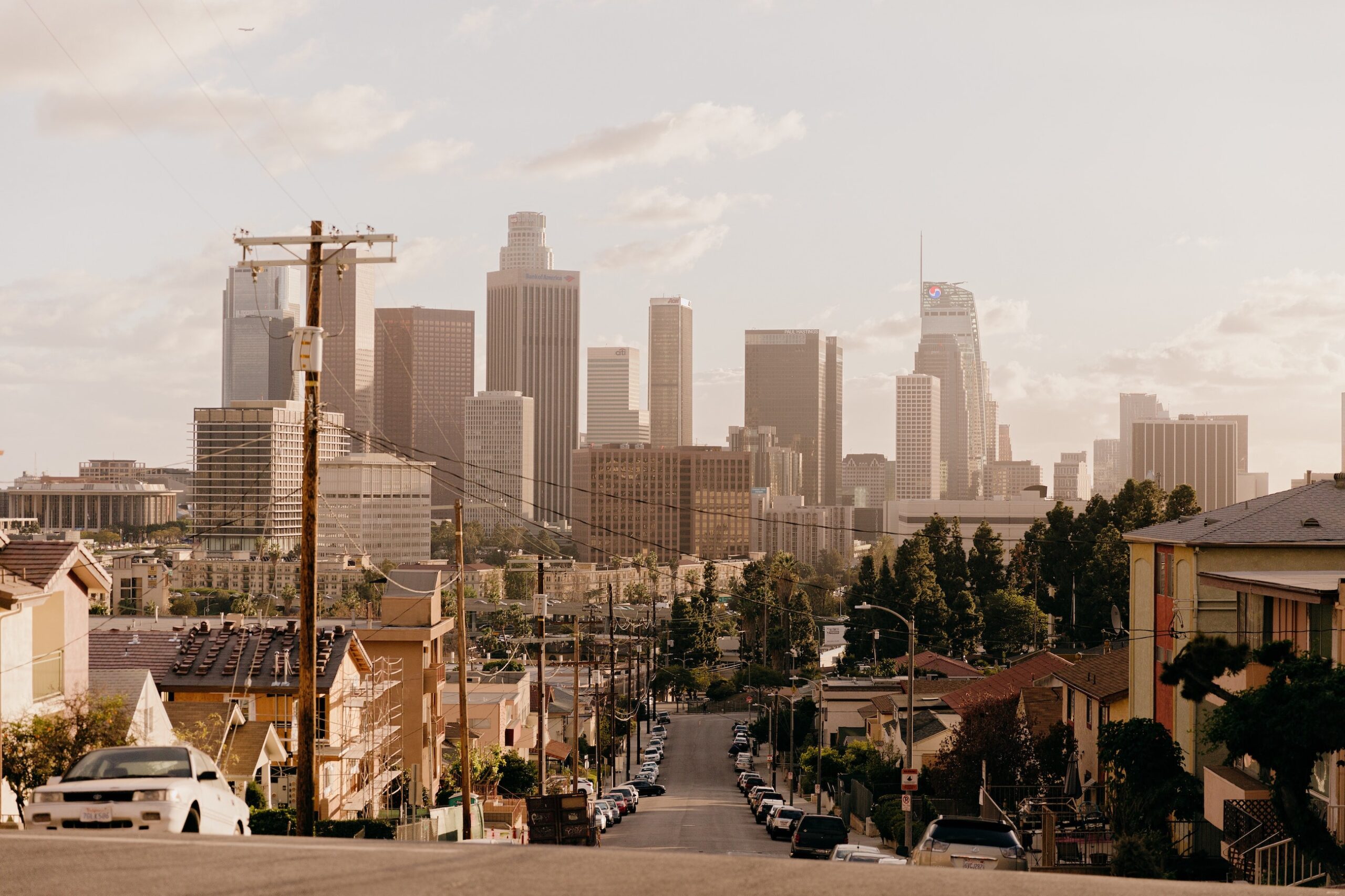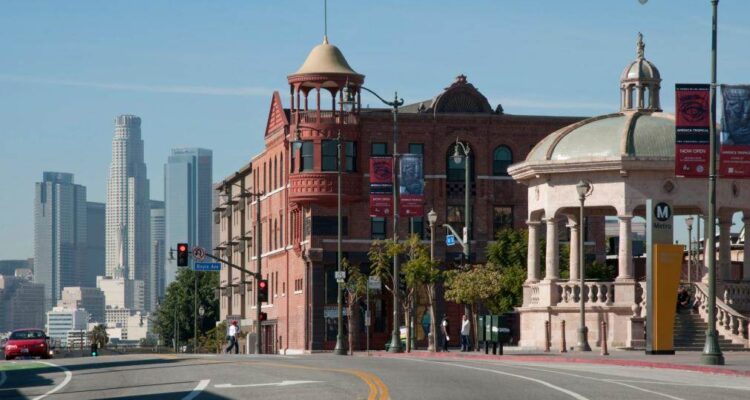
Active
Boyle Heights Community Plan
Active
The Boyle Heights Community Plan Update was approved by the City Council in September 2024.
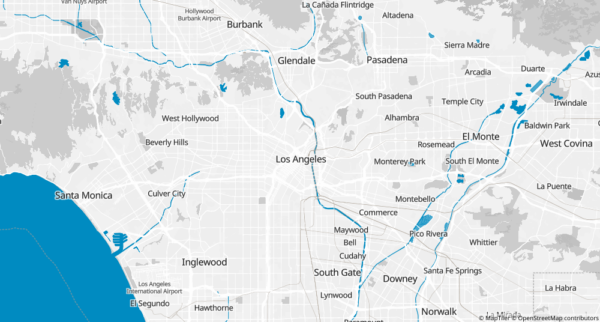
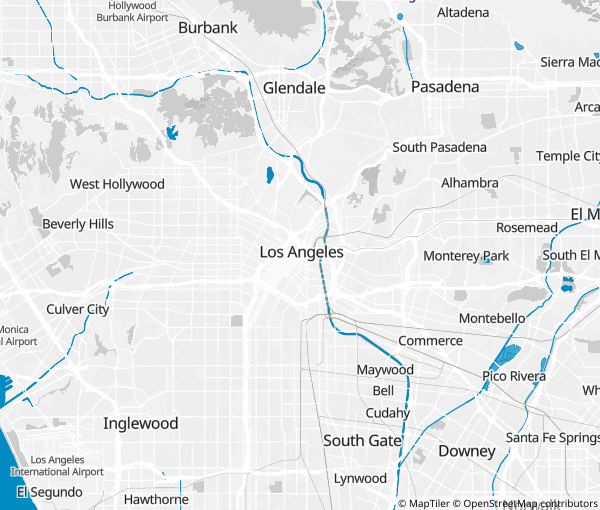
Issue Details
Government Officials
Development Approval Process
Overview
UPDATE: On September 25, 2024, the City Council approved the Boyle Heights Community Plan Update. The Plan update process has been underway for many years with considerable input from the local community and the Conservancy. The Conservancy pushed for the expansion of the Historic Preservation Community Implementation Overlay Zone which will offer new tools for managing change in historic neighborhoods, new zoning and use districts to retain longtime corner stores and legacy businesses, and residential and commercial anti-displacement strategies. Thank you to City Planning staff, residents and all who have contributed to this effort!
The Boyle Heights Community Plan is one of the City of Los Angeles’s 35 Community Plans and sets goals and policies for the future of Boyle Heights. The Boyle Heights Community Plan Update was initiated in 2006 and has been shaped by City Planning with input from the local community and the Conservancy.
Boyle Heights, a comparatively dense, urban neighborhood, is one of the City’s most transit-accessible communities. The update to the Plan encourages specific growth around transit hubs and commercial corridors while conserving residential areas’ existing varied densities and historic character.
At a high level, the Boyle Heights Community Plan aims to:
- Address the housing needs of current and future residents
- Maintain the rich cultural history and neighborhood identity of Boyle Heights
- Promote local jobs and small businesses
- Address community health and environmental justice
- Address climate change
About This Issue
Community Plan Updates offer an opportunity to incentivize and plan for proactive protections for historic resources.
Boyle Heights is among the oldest neighborhoods in Los Angeles and its historic properties are particularly at risk given the low percentage of designated historic resources and increased levels of new and proposed development.
Additionally, 89% of all units in Boyle Heights were built before 1978, with about 71% of all multi-unit properties being built before 1978. The City’s Rent Stabilization Ordinance (RSO) applies to multi-unit properties built before 1978 which makes a high percentage of the housing stock in Boyle Heights subject to the RSO.
On October 11, 2022 the Conservancy submitted comments on the Draft Environmental Impact Report for the Boyle Heights Community Plan.
The Boyle Heights Community Plan Update was recommended to the full City Council by the City’s Planning and Land Use Management (PLUM) Committee on Tuesday, December 5, 2023, and subsequently approved by the City Council on December 12, 2023. Due to the amendments approved, the plan required reconsideration at the City’s Planning Commission (CPC). A hearing at CPC took place on January 11, 2024.
To learn more about the Boyle Heights Community Plan, click here, You may also send questions and comments about the Boyle Heights Community Plan to:
Ernesto Gonzalez, City Planning Associate
City of Los Angeles Department of City Planning
200 North Spring Street, Room 667
Los Angeles, CA 90012
E-mail: ernesto.a.gonzalez@lacity.org
Our Position
Our comments to the Plan have been focused on the need to balance new growth and development with the retention of existing resources through expanded strategies and tools, including anti-displacement strategies. We support the Plan’s new zoning regulations for the Brooklyn Avenue Neighborhood Corridor (HCM #590), legacy corner stores to remain in residential neighborhoods, tenant size limits in areas where legacy businesses are concentrated, and the creation of the Community Plan Implementation Overlay (CPIO) Historic Preservation Subarea B.
We have recommended the expansion of the CPIO Historic Preservation Subarea B, which creates a new set of tools for managing change in historic neighborhoods. We expect the newest version of CPIO Subarea B to include eligible historic districts identified by SurveyLA and the Adelante Eastside Redevelopment Project Area Survey, including Brooklyn Avenue Neighborhood Corridor, Boyle Avenue Residential Historic District, Mount Pleasant Residential Historic District, Hostetter Industrial District, and 500-600 South Andersen Street Industrial Business District. To provide a consistent policy approach with respect to historic resources in the community plan area and to protect historic housing from demolition and degradation, we continue to request Wyvernwood Garden Apartments and all other local, state, and National Register eligible historic districts in Boyle Heights be added to the CPIO Subarea B.
The Conservancy has provided additional recommendations, including adding demolition and permit delays for projects where an existing structure is 45 years of age or older, and ensuring historic multi-family residential, commercial, and industrial neighborhoods benefit from similar regulations.
We also support a new legacy small business special use program that encourages new developments in the Hybrid Industrial zone to incorporate space for displaced longtime neighborhood businesses, while capping rent increases at 5% per year. To view our September 16, 2024 public comment letter to PLUM click here.
In April 2023, the Conservancy submitted the following key amendments to the City’s Planning Commission:
- Expand Community Plan Implementation Overlay (CPIO) district Historic Preservation Subarea B, to broaden its effectiveness as a strong model for conserving historic residential neighborhoods. To provide consistency in the plan area, CPIO Historic Preservation Subarea B should be further expanded to include all local, state, and National Register eligible and identified historic districts, planning districts, and bungalow court properties in the CPA. This includes, but, is not limited to Wyvernwood Garden Apartments and Stone Street Residential Historic District, which remain vulnerable to redevelopment and degradation.
- Add demolition and permit delays for projects where an existing structure is 45 years of age or older in CPIO Subareas A and B, to address affordability and displacement concerns.
- Retain existing longtime small businesses through new zoning regulations and use districts. Use CX2 and CX5 to feature a maximum size limit to ground story commercial to support existing and future small and longtime neighborhood-serving business. To enhance this strategy, we recommend Character Commercial I Frontage be applied to commercial properties in the RX2 and CX5 Use Districts. Apply CX5 Use District to a portion of First Street between Mathews and Fickett Streets where there is a concentration of small legacy businesses.
To read our full comments to the City’s Planning Commission, click here.
How You Can Help
Update: The City Council voted to approve the Boyle Heights Community Plan on September 25, 2024. You may view our public comment letter to the City Council here. Thank you to all who have supported this effort over the years!
Issue Resources
- LAC City Council - Boyle Heights Community Plan Update (CF 23-0861), 9-24-24
- Planning and Land Use Management Committee - LAC Public Comment, 9-16-24
- Planning and Land Use Management Committee - Meeting Agenda - 09.11.2024
- City Planning Commission - meeting agenda - 01.11.2024
- LAC Comment letter to Planning & Land Use Management Committee re BHCP Update, 12-4-23
- Planning and Land Use Committee - meeting agenda - 12.05.2023
- City Planning Commission - Special meeting agenda - 04.20.2023
- LAC Comment Letter to City Planning Commission - BHCP Update
- LAC Comment Letter - DEIR BHCP Update
- Cultural Heritage Commission - meeting agenda - 12.01.2022
